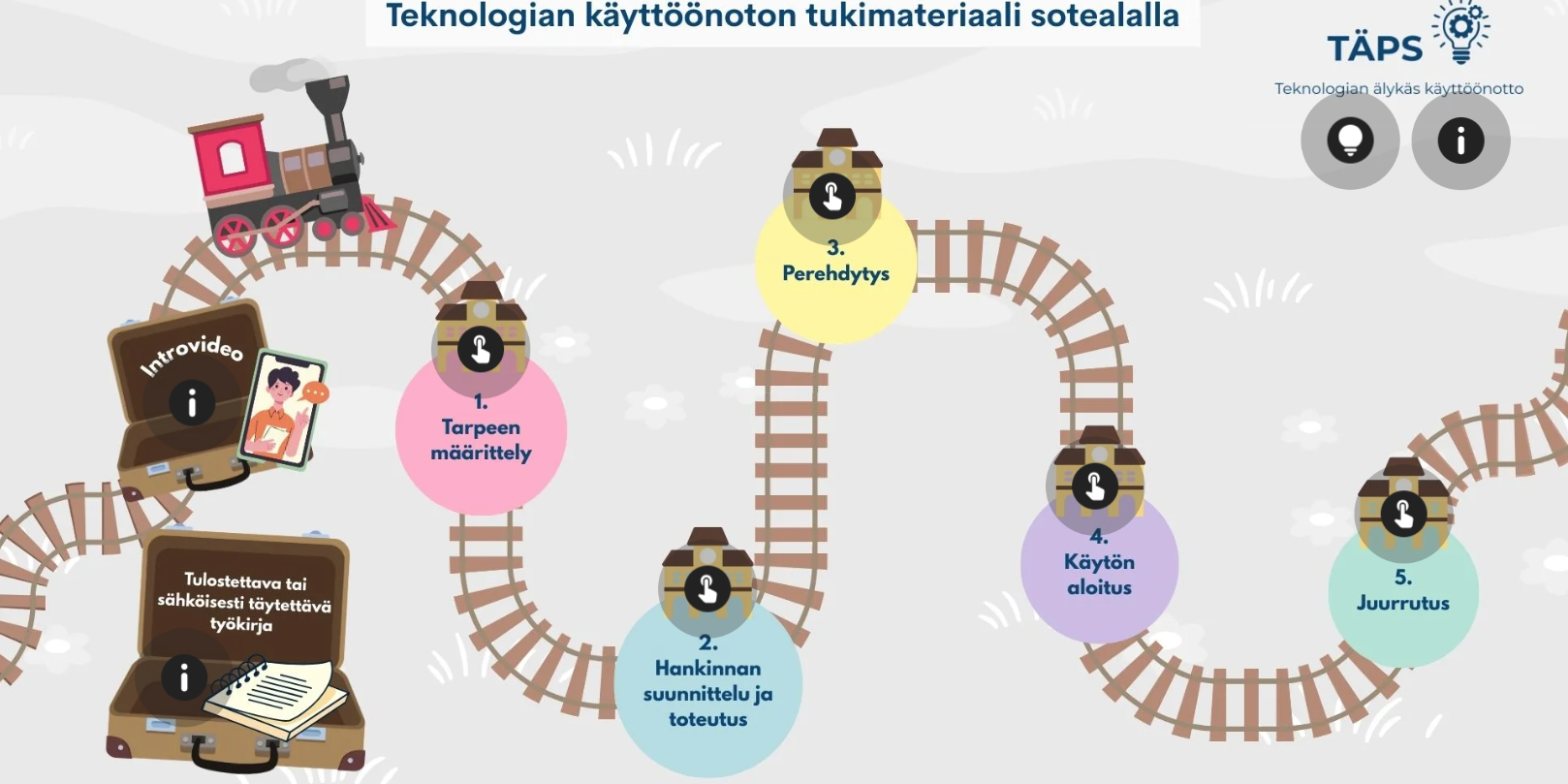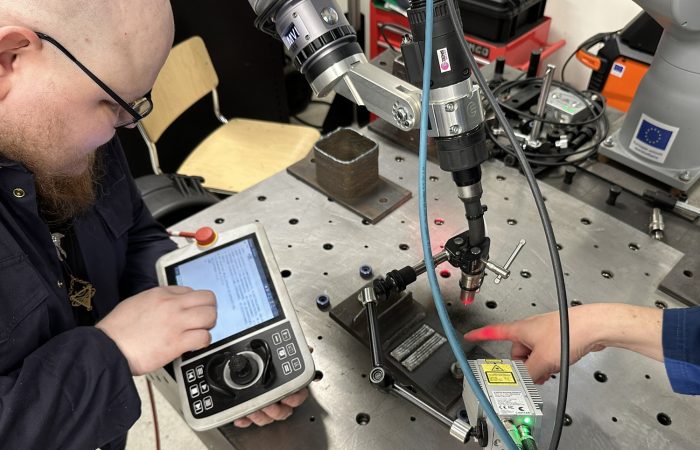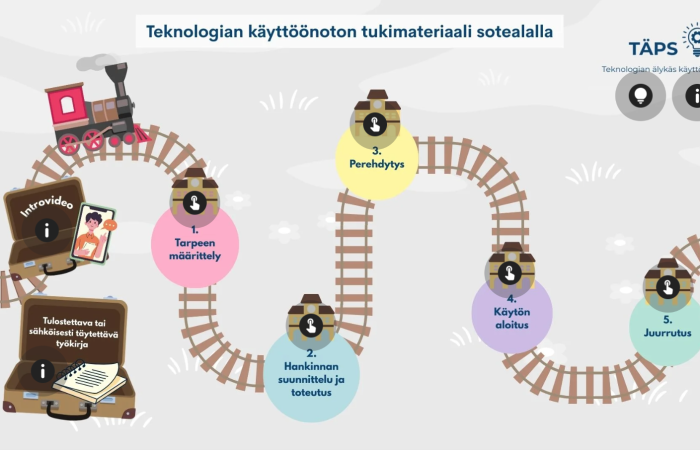We Research: Tools for smart implementation of technology in the social and healthcare sector
Successful use and implementation of technology begins with good planning. That applies in social and healthcare, too. Smart implementation follows many of the same principles regardless of whether the technology in question relates to health care or wellbeing. It is important to document plans and communicate decisions clearly so that everyone shares the same understanding of what has been agreed upon. At the same time, plans should remain flexible—it's often beneficial to try new approaches even when change doesn't seem necessary. The main goal of the TÄPS project (Smart Implementation of Technology for New Service Innovations in the Social and Health Care Sector) is to strengthen the capacity of SMEs in the social and health care and technology sectors to develop service innovations. The sub-goal of the project is to support social and health care organizations in adopting new technologies, managing the related operational changes, and making use of existing regional support services, such as testbeds. A support material for smart implementation of technology will be a result of the project.

The focus in TÄPS project has been in versatile pilots for technology implementation in social and healthcare sector. The process of implementation has been broadly from the initiation phase to re-implementation of earlier purchased devices. These pilots have focused on using service design methods to support changes in user organizations’ operational practices and provide the necessary support for successful implementation. Based on the experiences of the pilots and earlier information TÄPS project has generated broadly applicable materials to support technology adoption and the development of new services.
The support material developed in the project is designed for social and health care organizations to aid in the adoption of new technology or the reintroduction of previously acquired technology. The material is available as a web application and as a fillable workbook that is linked to the web application. The workbook is intended to be used alongside the web-based "Support Material for Technology Implementation" and can be completed either digitally or by printing it out. It includes concrete tasks and practical tips to help organizations focus on essential aspects throughout the implementation process. The workbook is also useful in situations where previously adopted technology has seen limited use or needs to be updated or used in more versatile ways. To introduce the implementation process, an animated video has been created to guide employers and employees in using the materials. With the help of this support package, social and health care organizations can successfully adopt new technologies and create new opportunities and service innovations.
The support material will also be included in the open learning materials library to be used to strengthen the technology adoption skills of new social and health professionals. Additionally, the material can be used by teachers who are not familiar with technology and its adoption. Health and well-being technology is in the curricula of all social and health professions and in the professional qualification requirements. The technology adoption skills of new professionals strengthen the readiness of workplaces to adopt technology in a high-quality and efficient manner.
Did you know?
- A device can be classified as either medical or welfare technology depending on its intended use. For example, a bright light lamp is considered a medical device when used to treat depression, but when used to boost mood or alertness, it is regarded as a wellness product.
- A medical device must meet specific definitions. It is intended for use on humans, with purposes such as preventing, predicting, diagnosing, treating, alleviating, or monitoring a disease. The intended use declared by the manufacturer is compared to the definition of a medical device, and if it qualifies, the device is marked with a CE label.
- It is important to understand that successful technology implementation consists of a long process, not just learning how to use the device.
Jyräkoski, T., Vähätalo, M., Poberznik, A. & Toivonen, K. (2025). Teknologian käyttöönottoprosessi sote-alan organisaatioissa. In E. Varamäki, S. Uusimäki, S. Päällysaho, & M. Karvonen (Eds.), SEAMK–SAMK–CENTRIA: Tutkimusfoorumi 2025 (pp. 506–518). Seinäjoen ammattikorkeakoulu. https://www.theseus.fi/handle/10024/890825


